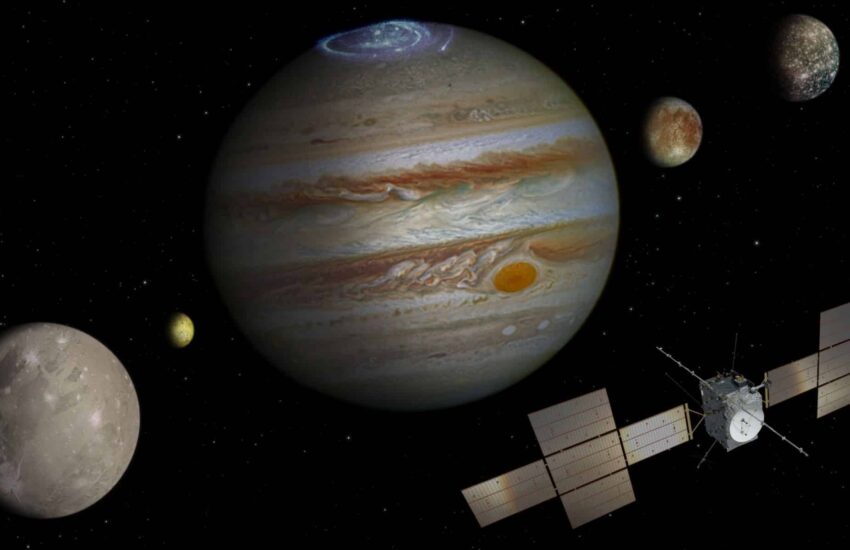The European Space Agency’s (ESA) JUpiter ICy moons Explorer (JUICE) mission, successfully launched on April 14, 2023, marks a significant milestone in space exploration.
This ambitious mission aims to explore Jupiter and its icy moons, including Europa, Ganymede, and Callisto, to gather data on their composition, geology, and potential habitability.
The Journey to Jupiter
JUICE’s journey to Jupiter is a complex and multi-year voyage, requiring several gravity-assist maneuvers to gain the necessary speed and trajectory. One of the critical maneuvers is the lunar-Earth flyby, which helps the spacecraft adjust its path and increase its velocity without using additional fuel. This maneuver involves a close approach to both the Moon and Earth, utilizing their gravitational forces to propel JUICE towards its final destination.
The lunar-Earth flyby is scheduled to occur in August 2024, with JUICE first flying by the Moon and then Earth shortly after. This flyby will provide the spacecraft with the necessary boost to continue its journey to the outer solar system. During this phase, scientists will take advantage of the opportunity to calibrate the spacecraft’s instruments and gather valuable data from both the Moon and Earth.
The intricate navigation required for this maneuver demonstrates the precision and expertise involved in space mission planning and execution. The flyby also allows for a unique opportunity to study the gravitational interactions between celestial bodies, further enhancing our understanding of orbital dynamics.
ESA’s JUICE Mission Objectives and Scientific Goals
The primary objective of the JUICE mission is to study Jupiter’s icy moons, particularly Ganymede, the largest moon in the solar system. The mission aims to investigate the moons’ potential subsurface oceans, their surface compositions, and the possibility of habitability. By understanding the conditions on these moons, scientists hope to gain insights into the broader question of life beyond Earth.
The spacecraft is equipped with a suite of advanced instruments, including spectrometers, radar, and cameras, to conduct detailed observations. One of the key goals is to determine the thickness of the ice shells covering these moons and to search for signs of liquid water beneath the surface.

Additionally, JUICE will study Jupiter’s atmosphere, magnetosphere, and its interactions with the moons, providing a comprehensive understanding of the Jovian system. The instruments on board JUICE are designed to perform high-resolution mapping, analyze the chemical composition of the surface and subsurface, and detect magnetic and gravitational anomalies, which can reveal the internal structure of these celestial bodies.
Challenges and Future Prospects
The journey to Jupiter is fraught with challenges, including the vast distances, harsh radiation environments, and the need for precise navigation. The success of the lunar-Earth flyby is crucial for the mission’s trajectory and overall success. Once JUICE reaches Jupiter, it will face further challenges in conducting its scientific investigations while withstanding the planet’s intense radiation belts.
Despite these challenges, the JUICE mission holds the promise of groundbreaking discoveries. The data collected by JUICE will not only enhance our understanding of Jupiter and its moons but also contribute to the broader field of planetary science and the search for life in the universe.
The mission’s findings could pave the way for future exploration missions to the outer solar system and beyond. The insights gained from JUICE could also inform our understanding of other icy worlds, such as Saturn’s moon Enceladus and Neptune’s moon Triton, where similar conditions might exist.
ESA’s JUICE mission represents a monumental step in our quest to explore the outer reaches of our solar system. The upcoming lunar-Earth flyby is a critical milestone that will propel the spacecraft towards its ultimate goal of studying Jupiter and its icy moons.
As JUICE continues its journey, the scientific community eagerly anticipates the wealth of knowledge and discoveries that lie ahead. The mission exemplifies international collaboration and the relentless human spirit to explore the unknown, pushing the boundaries of what we know about our cosmic neighborhood.


